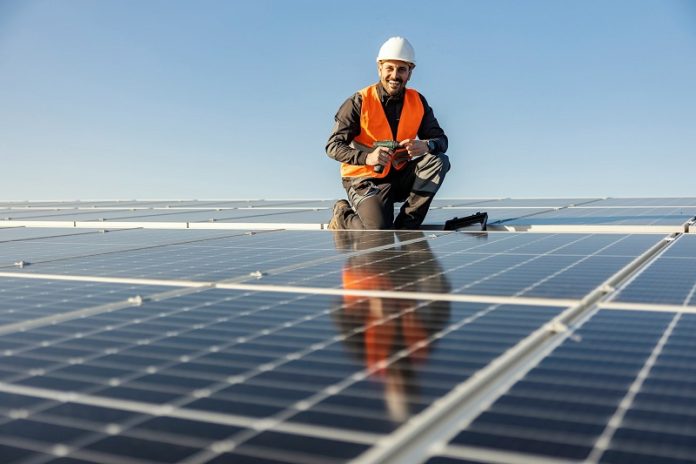
Scientists have found a better and more eco-friendly way to make organic solar cells (OSCs)—a type of solar panel that is light, flexible, and affordable.
The new method uses a high-speed doctor-blading technique with green (non-toxic) solvents and still achieves high power output.
Traditionally, OSCs have been made using harmful halogenated solvents like chloroform.
These chemicals are not only dangerous to human health and the environment but also hard to use for large-scale manufacturing.
That’s because they require high concentrations and very specific conditions, making mass production tricky.
In the past, green solvents—like o-xylene and toluene—have been considered as safer options. However, they didn’t dissolve the materials well and often resulted in poor-quality solar cell films, leading to lower efficiency.
But now, a research team has come up with a high-speed doctor-blading method that solves these problems.
This technique lets the solar cell materials spread evenly and dry in a way that forms better-quality films, even when using green solvents.
Here’s how it works: by moving the blade quickly (at 70 mm per second), the team was able to use a much lower solution concentration—just 8.8 mg/mL—compared to the 15.4 mg/mL needed in older methods like spin coating.
This lower concentration makes it easier to use eco-friendly solvents.
The results are impressive. Using o-xylene, the solar cells reached a power conversion efficiency (PCE) of 18.20%. Toluene-based cells also did well, with a PCE of 17.36%. In real-world tests, they created solar modules with an efficiency of 16.07%—a great result for environmentally friendly production.
The key to o-xylene’s success was its slower drying time. It gave the material more time to form smooth, high-quality films with better crystal structures. This improved the way electricity flows through the cells, boosting performance.
Tests showed that films made with o-xylene had fewer defects and stronger molecular packing, which helped increase efficiency even more.
Dr. Jun-liang Yang, the lead researcher, said, “This is a big step forward. We’re showing that it’s possible to make high-efficiency solar cells using safer, greener materials—and do it in a way that can be scaled up for industry.”
This breakthrough opens the door to making organic solar panels that are not only efficient and flexible but also safer for people and the planet. It could lead to cleaner solar panels for everything from wearable gadgets to building roofs, helping move the world toward a greener energy future.



